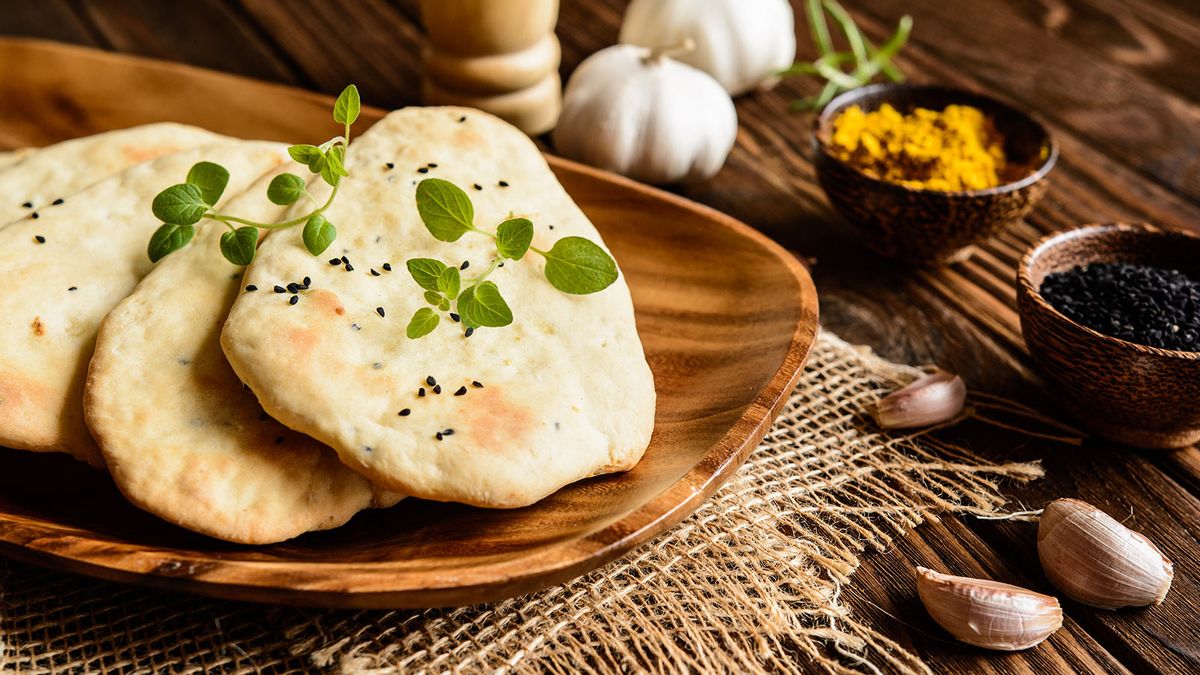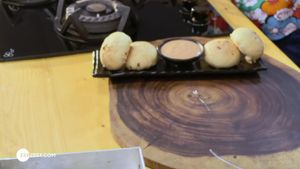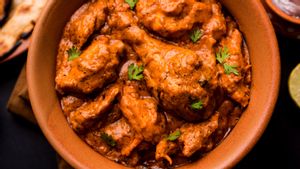No Indian meal is complete without the presence of a warm, fluffy roti. Chapati, roti, naan, paratha, and other Indian flatbreads are a great way to scoop up Indian curries. Yeast-leavened naan is perhaps one of the most popular bread made in a clay oven.
History of Naan
Not many know, but naan has an interesting back story. The first mention of naan can be traced back to the works of Amir Khusrau, a celebrated Sufi poet, a mystic and spiritual disciple of Nizamuddin Auliya in 1300 AD. The flatbread is also supposed to have travelled to India from central Asia and Persia with the Mughals in the 16th century.
Its ancestry aside, naan has become the preferred bread served with a variety of north Indian delicacies. And despite naan’s popularity, seldom do people attempt to make it at home—some feel it can’t be recreated without a tandoor, while others consider the process of making naan a long and cumbersome affair.
What seems like a never-ending process can easily be simplified with methodical preparation. Chef Siddharth Kalyanaraman shares a step-by-step guide and expert tips and tricks to make restaurant-style naan at home, without a tandoor.
Tandoori Naan Recipe
Ingredients
- 2 cups refined flour
- 1 tablespoon oil
- ½ teaspoon baking soda
- 1 teaspoon sugar
- 1 teaspoon salt
- ½ cup yoghurt (room temperature)
- 1 teaspoon black and white sesame seeds
- Lukewarm water
Method
1. Mix all the dry ingredients together in a bowl. Add the yoghurt and mix again. Now add lukewarm water and knead to make a soft dough. This dough should be softer than chapati dough.
“Make sure you use room temperature yoghurt and lukewarm water. If you use cold yoghurt, the dough will not be glutinous. Gluten is the component that gives naan its chewy texture, which is one of its highlights. Also, using cold water will make the naan crumbly,” says Kalyanaraman.
2. Once the dough is ready, knead it with oil. Grease your hands with some oil and knead the dough again. Cover the dough with a moist cloth, which will help the naan dough from drying out, and let it rest for some time.
Chef Kalyanaraman suggests keeping it in a warm place ideally for around 2-3 hours so that it rises well. This process is known as proofing.
3. After resting, dust your hands with dry flour, gently knead the dough again, and divide it into six equal parts to make naan. Dust a ball of naan dough with dry flour before you roll it.
Keep all the dough balls on a plate and cover them with a wet cloth to prevent them from drying.
4. Roll out to make an oval or round naan, as per your preference. Sprinkle some sesame seeds on the naan. Ensure that the thickness of the naan is not more than ¼th of an inch. If it’s thicker than that, it may not cook through within.
Making tandoori naan at home without an oven
When it comes to cooking tandoori naan at home, you don’t necessarily need a tandoor like the professionals. Chef Kalyanaraman says you can achieve the same cooking effect in an oven. In case you don’t have an oven, you can make the naan on the regular tawa (pan) too.
Making naan in an oven
Make sure the temperature is set to the maximum. “If your oven goes to around 275 degrees celsius, your naan shouldn’t take more than 1 to 1.5 minutes to cook,” adds the expert. Once done, apply some butter on the naan and serve.
Making naan on a tawa
Heat the tawa thoroughly. Once done, apply some water on one side of the naan and place this side on the pan. When the naan starts to cook, hold the tawa from the handle and flip it upside down.
Now roast the naan directly on the flame until brown spots appear on the naan. Place the tawa back on the flame and take the naan off. Apply some butter on the naan and you’re good to go.
Serve hot naan with tawa tarkari, butter chicken, or any of your favourite gravy. And in case you’re in the mood for some fusion food, Chef Ranveer Brar recommends experimenting with Naan Bruschettas.




